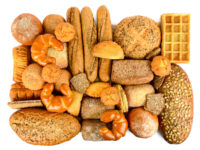Snack and bakery companies seek new options for sanitation software
Sanitation software evolves based on industry standards

The food industry increasingly looks for paperless solutions for scheduling purposes. To meet this demand, software companies continue to work with to meet the industry’s needs.
Industry requests
“It seems like everyone is starting to require paperless food safety and sanitation execution plans,” says Robert Burgh, president, Nexcor Food Safety Technologies, Buford, GA.
Burgh says that Nexcor’s KLEANZ Food Safety and Sanitation Mobile offerings are used in combination with the desktop version for more preventative and predictive food safety plans that start with documentation right on the plant floor.
“We are also seeing a greater desire for transparency and data sharing,” adds Burgh. “One of the biggest benefits of KLEANZ is the system’s ability to track information across all departments. The data can be trended into dashboards that inform decision making for optimized execution of food safety plans.”
Dashboards also help management better allocate resources, remarks Burgh, and in terms of data sharing, KLEANZ offers more opportunities than ever for aggregating information through IoT sensors.
“The industry’s move toward software solutions in the area of sanitation is still in its early stages,” says Chris Domenico, territory manager, North America, SafeFood 360, Dublin, Ireland. “In terms of our engagement with the market, the primary requirement centers around solutions which automatically trigger alerts and notifications to relevant employees that sanitation activities are required.”
A primary need is visibility of sanitation activities, adds Domenico. “Other requirements seem to center around clear and easily built workflows, which includes checklists of cleaning activities, verification testing—i.e., swabbing/ATP for pathogens and allergens—and records of actions taken where sanitation results have failed.” Another emerging requirement is the ability to embed cleaning instructional documentation and videos, as well as visual standards.
Software used specifically for sanitation or maintenance tasks must be compatible with existing systems, and there may be a “bolt-on” solution already available, says Bonnie Biegel, director, QA, Americas, AIB International, Manhattan, KS. Some companies repurpose preventive maintenance software and adapt it to meet this need, she notes. Others might develop their own solutions internally.
More organizations are looking for better communication between departments, says Jay Wright, vice president, sales, SOMAX, Inc., Alpharetta, GA. This is especially true of sanitation and maintenance. “Historically, maintenance and sanitation schedules have been managed and documented separately. SOMAX brings managing the Master Sanitation Schedule and the Maintenance Schedule together in one application.”
Sanitation is able to submit a work request to maintenance once they notice a problem, and maintenance is able to request sanitation when they complete a work order. “Having all of this managed and documented in a single system greatly improves communication. Also, having documentation that a machine was properly cleaned and sanitized after maintenance was performed is very important to auditors.”
Wright also notes an increased need for verification and validation. “It’s more important now than ever that we have documentation and sign off from QA/QC that proper procedures were followed and executed before releasing equipment back to production.”
Changing needs
There are three main areas where companies have changed how they schedule sanitation and maintenance work, says Burgh. First, they need the flexibility to document allergen changeovers even if they were not already scheduled. “This, along with the need to handle flexible production schedules for documenting pre-flights, gave us the idea for our ‘Quick Create’ sheets.”
Second, on a KLEANZ mobile device, users can document production events in real-time to meet their food safety standards, Burgh states. “For example, a sanitation lead or supervisor may have to take or give work to a sanitor in the middle of a shift. With KLEANZ Mobile, they can simply move work from sanitor to sanitor as needed. The work then shows up on the sanitor’s KLEANZ mobile device within a minute or two. KLEANZ Mobile is now available for Windows 10 tablets, along with iOS and Android.
Third, companies are seeking the flexibility to automatically schedule tasks in any environment and with any equipment or production line, adds Burgh. “This can occur from sensors or from SCADA data interfaces.”
Managerial staff need to be able to measure success while maintaining transparency, says Burgh. “Risk mitigation is the most-important part of food safety, and we give our clients the tools to achieve this through verification and validation of all food safety actions.”
The industry’s needs are always evolving, notes Wright. “In the past year, SOMAX has been focused on improving communication between departments through digital transformation, better integration of sensor data from equipment, and improved verification and validation of work performed.” He notes work is ongoing to improve cloud-based software and mobile apps for Android and iOS.
Biegel says that software platforms have expanded to include tracking the training of individuals performing the task, changes in procedures that would require retraining, the time it takes to complete tasks, and when a task has to be repeated to enhance the robustness of the system. “This provides an extra level of assurance that tasks are being completed by trained personnel. Software allows almost instantaneous tracking of trending of issues to identify inefficiencies and the associated costs to determine cause and corrective/preventative actions to enhance their program.”
Looking for a reprint of this article?
From high-res PDFs to custom plaques, order your copy today!






